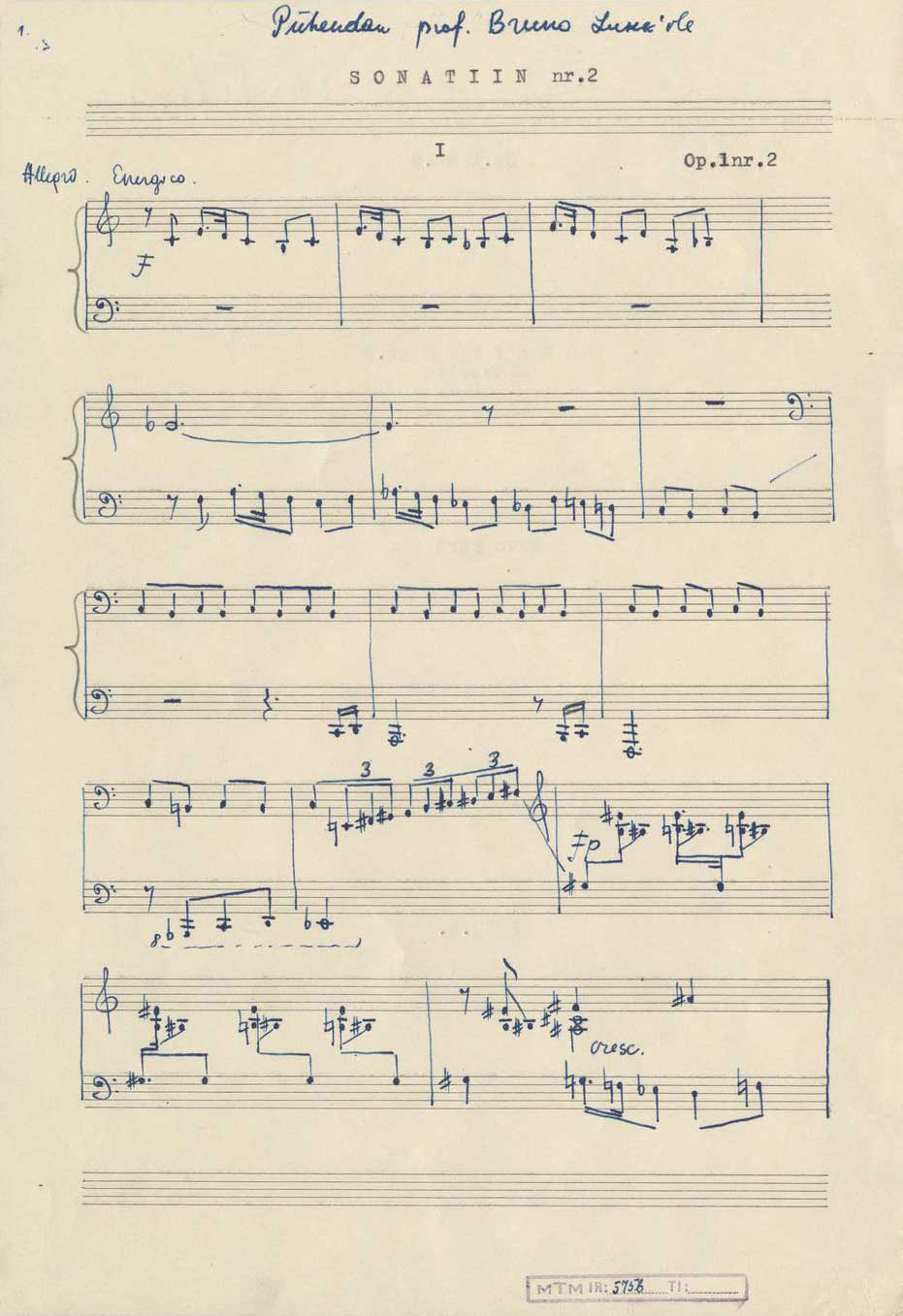Composed during his first year at the Tallinn conservatory (1958–1959), the two sonatinas, along with the Partita (1958), belong among the earliest concert compositions in Arvo Pärt’s list of works. With these piano pieces, the young composer was introduced to the wider audience thanks to Professor Bruno Lukk, an acclaimed pianist who valued Pärt’s works highly enough to include them in his repertoire. All three early piano compositions are also dedicated to him. Bruno Lukk was also the one to first perform and record Pärt’s sonatinas. Pärt completed the Sonatina No. 1 in January 1958 as a first-year student at the conservatory, followed by Sonatina No. 2 in the following year.
Just like the Partita, the sonatinas are composed in neo-classical style, which be…
Composed during his first year at the Tallinn conservatory (1958–1959), the two sonatinas, along with the Partita (1958), belong among the earliest concert compositions in Arvo Pärt’s list of works. With these piano pieces, the young composer was introduced to the wider audience thanks to Professor Bruno Lukk, an acclaimed pianist who valued Pärt’s works highly enough to include them in his repertoire. All three early piano compositions are also dedicated to him. Bruno Lukk was also the one to first perform and record Pärt’s sonatinas. Pärt completed the Sonatina No. 1 in January 1958 as a first-year student at the conservatory, followed by Sonatina No. 2 in the following year.
Just like the Partita, the sonatinas are composed in neo-classical style, which became an important trend among the young composers (including Eino Tamberg, Veljo Tormis, Kuldar Sink and Jaan Rääts), emerging in Estonia during the late 1950s. The form of the sonatinas makes a reference to the neo-classical style, while the music itself is atonal.
Just as the titles allude, features of a “small sonata” can be found in the form of the sonatinas. Although Sonatina No. 1 has two parts, both sonatinas still resemble a three-movement sonata cycle with fast-pacing first and third movements and a slow middle movement. The sense of three movements is provided in Sonatina No. 1 by an unexpected reminder of the main theme of the first part in allegro at the end of the second part.
There are also references to the sonata form in the beginning parts of both sonatinas. Characteristic of a sonata, the first part of Sonatina No. 1 features two contrasting themes: the dashing, polyphonically developed main theme and a lyrical homophonic second theme. Sounding for the second time, however, they have influenced each other, as is characteristic of the reprise of the sonata form. In the first part of Sonatina No. 2, the opposition of the two contrasting themes is not as evident, but the reiteration characteristic of a sonata form can be noticed here too.
Apart from the sonata form, we can also recognize variation form (Sonatina No. 1, movement II) and rondo (Sonatina No. 2, movement III) in Pärt’s sonatinas. The composer has predominately used polyphonic development techniques, such as fugue-like themes, mirroring lines, ostinato bass, sequences, etc.
